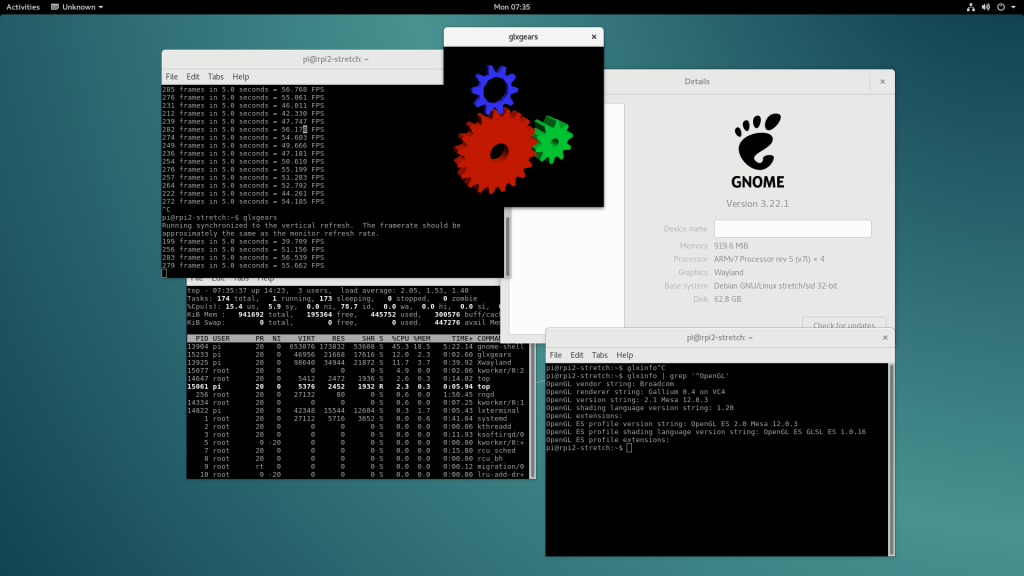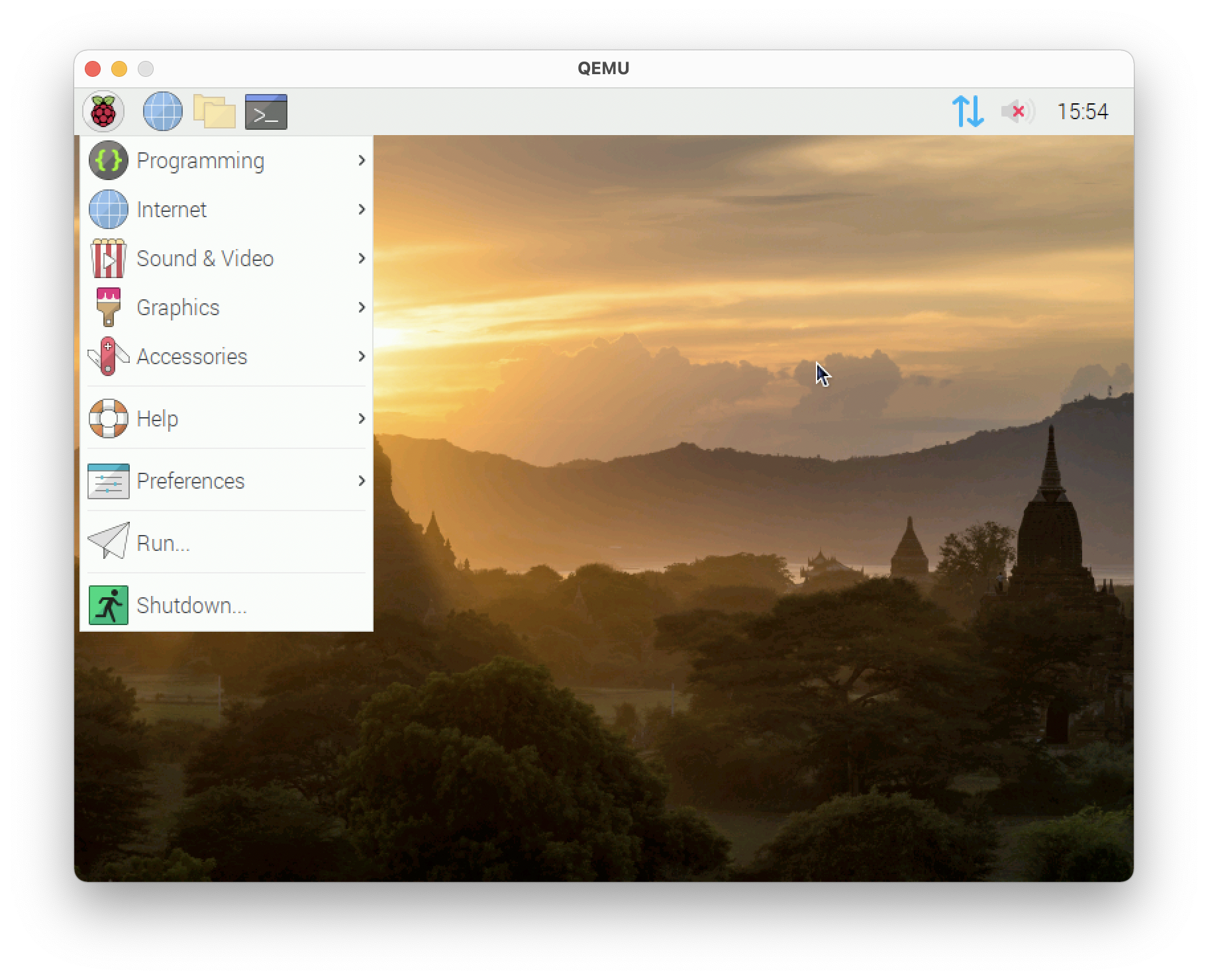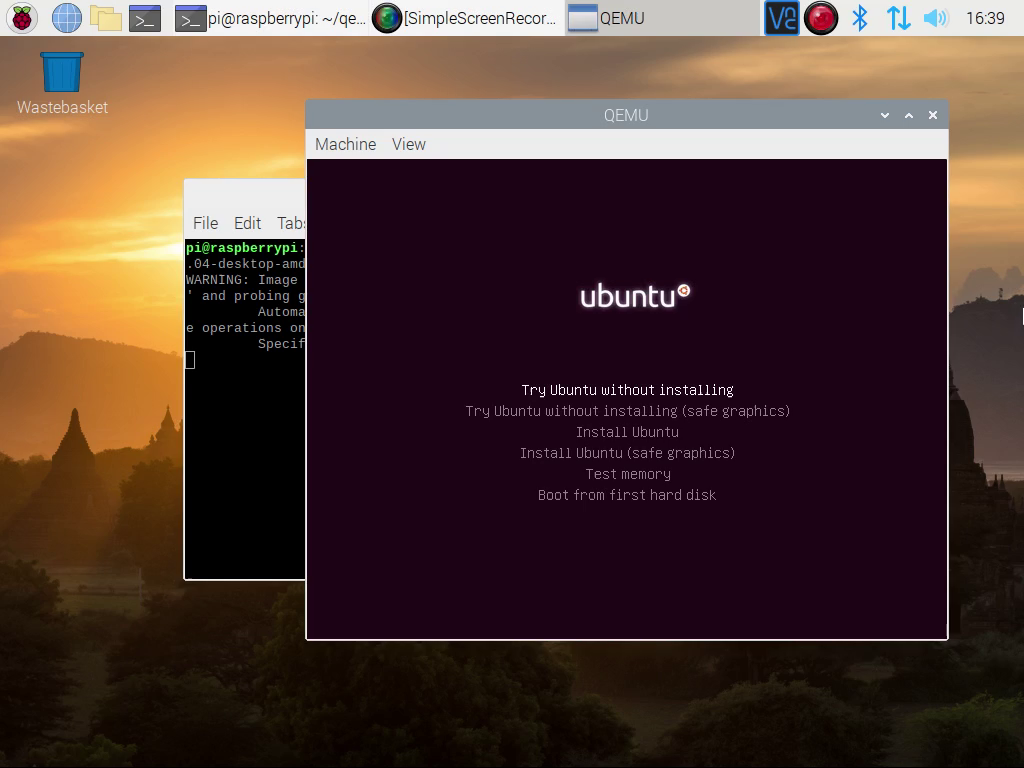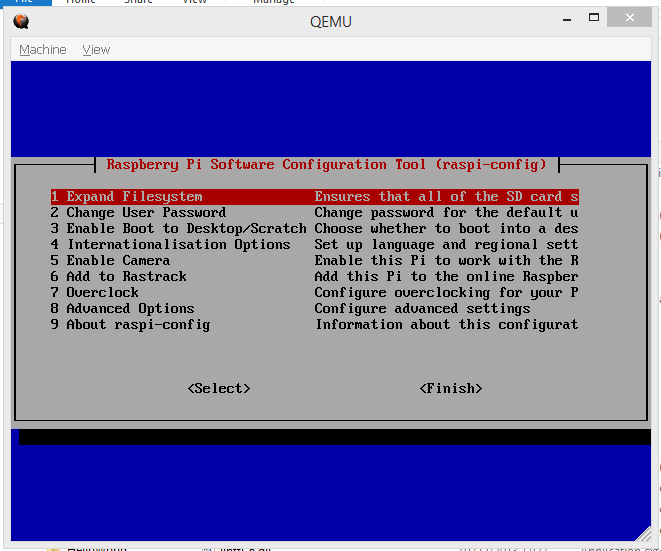


I solved this problem by writing down the line in a separate build log and deleting it from the ld.so.preload file (same as commenting it out). I did find the # symbol later which happened to be the “\”. So, the # symbol had switched to the british pound that looked like a squiggly ‘L’. But raspbian was setup with a GBR (Great Britain) locale and the british keyboard. Ugh, one of the first issues I ran into was to use the # symbol to comment out a line in /etc/ld.so.preload. I originally started with the one from a microsoft blog (about 2 years old) and ended up using the github instructions from the same guy that has provided the kernels.
Raspberry pi qemu how to#
There are 3 different pages that talk about how to write the commands in the windows cmd terminal to start qemu. I also followed the instructions and included the versatile-pb.dtb file in the qemu folder as well. I moved the image and kernel to the QEMU folder that was at C:\Program Files (x86)\qemu. In the example above, iimage -raspbian-stretch uses linux Kernel 4.9. Qemu download: qemu-w32-setup-20181211.exeĪt first I didn’t know which kernel to use, or even if the one I had was compiled, but if you search wikipedia and raspbian OS, there is a chart that shares linux kernel along with which release.

Here are some of the links and issues that I found out that I want to share. I was able to get QEMU to run rasbian and very happy that I got it working. Then run sudo raspistill -o cam.jpg, but that didn’t seem to work either (after a reboot) and I don’t recommend them other than I wanted to try to get the system working. Sudo usermod -a -G video $piĪnd then I tried adding to boot/config.txt. Since I had issues with the emulators, I think I’ll try VNC as described here or simply use the PI itself. Also, I don’t think I want to go through the trouble of setting up minecraft-pi w/ raspberryjuice on my pc, either. IE, it’s hard to take the Raspberry Pi w/ me on the airplane or other places.
Raspberry pi qemu windows 10#
The reason that I wanted run minecraft-pi in Raspbian in my Windows 10 pc was because I wanted to play around with minecraft-pi, python, and tkinter on my PC and then work w/ my son on the ‘real’ raspberry pi without being tied to the raspberry pi at a table in the kitchen. I think the root cause was that virtual box was using an x86 emulator vs using an ARM emulator and some incompatibility there. It’s been a few weeks since I went away from that so I don’t recall what the error was, but suffice to say, it didn’t work. Note that I had already tried Virtual Box and Minecraft-Pi wouldn’t start either. I’m pretty sure there is no way around that requirement either.” “The error message makes clear that Minecraft can’t find the Pi GPU since it’s not there. The reason that it won’t run as described from Raspi stackoverflow Dec 2016:

Grep: no such file or directory ‘ failed to open vchiq instance The error that I received when typing minecraft-pi in a terminal: While I was able to run Raspbian OS in both Virtual Box and QEMU, emulator limitations prevent minecraft-pi from running because Raspbian needs to use the raspberry pi GPU and the emulators do not provide support for that. This post is a run-down of my efforts to run minecraft-pi in an emulator of Raspbian OS in Windows 10.


 0 kommentar(er)
0 kommentar(er)
